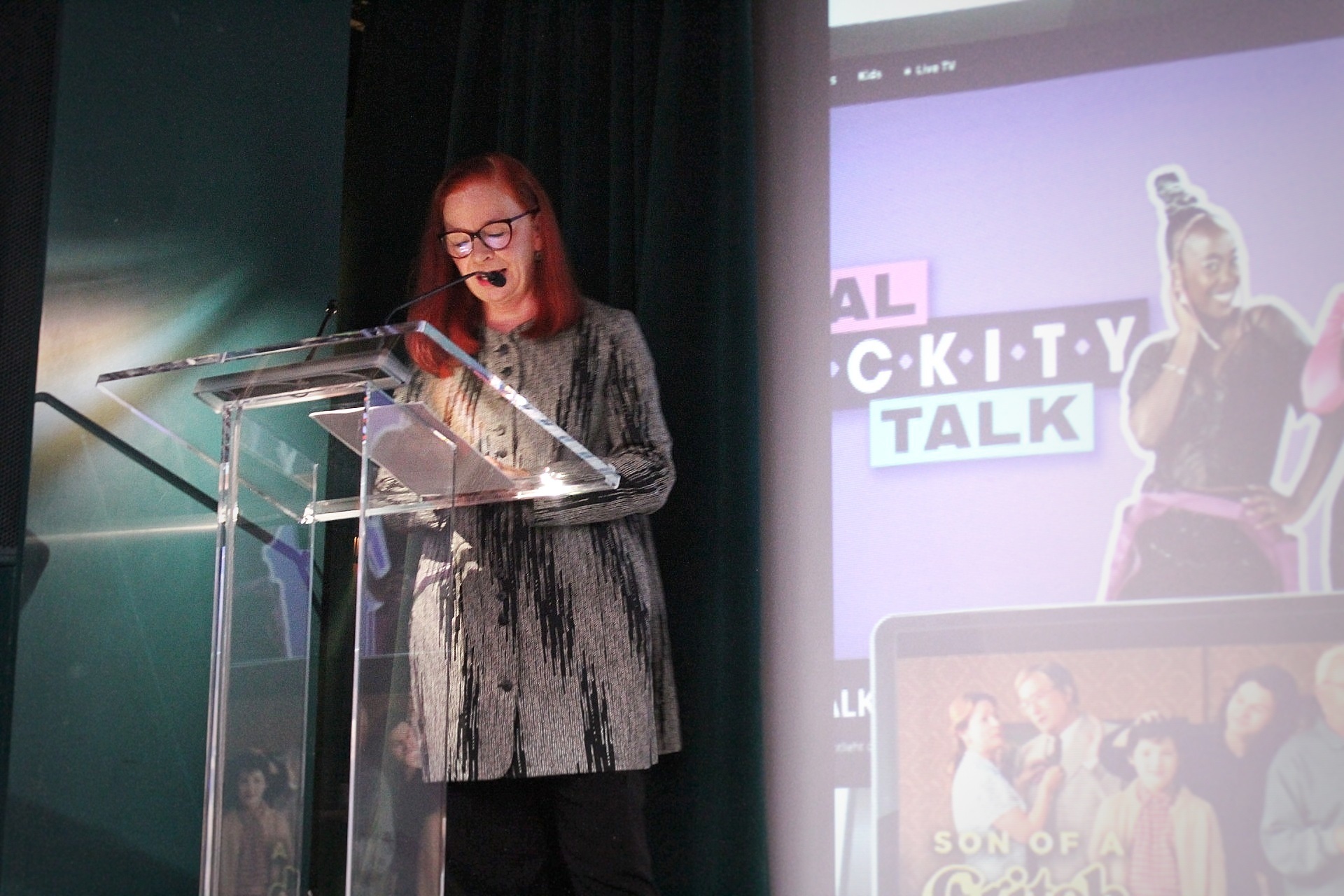Catherine Tait says CBC remains committed to indie producers

The CBC/Radio-Canada president and CEO addressed concerns over modifications in its latest CRTC licence renewal on a panel at Content Canada.
CBC/Radio-Canada president and CEO Catherine Tait says independent producers need not worry that the public broadcaster will lessen its commitment to them, after the recent licence renewal from the Canadian Radio-television and Telecommunications Commission (CRTC).
During a Q&A at the Content Canada conference in Toronto on Tuesday (Sept. 13), Tait addressed petitions signed by organizations such as the Canadian Media Producers Association (CMPA) and Association québécoise de la production médiatique (AQPM) about modifications in the new CBC/Radio-Canada licence, including the removal of any exhibition or expenditure requirements in regard to independent productions.
The CRTC made the decision because the “public broadcaster has met or exceeded its conditions of licence, repeatedly, year after year,” Tait said.
“So the concern and the worry of producers is that somehow we have been given a get-out-of-jail card and we’re going to go crazy,” Tait added. “And all I can say … is we are as committed — more committed — to independent producers than we have ever been. We’re broadening the base and the pool of independent producers we’re working with, we’re super excited about that. And there is absolutely no evidence to suggest that we are setting up an in-house production studio. It ain’t happening. So you do not have to worry about that.”
In its majority decision on the new licences, which began Sept. 1 and run until Aug. 31, 2027, the CRTC said “it would be unlikely for the CBC to decrease its collaborations with independent producers.” The CRTC cited factors such as the higher costs of producing programming in-house and CBC exceeding its requirements relating to independently produced programs of national interest.
The CMPA, AQPM and the Writers Guild of Canada are among the organizations that have issued letters or petitions asking Canadian Heritage to set aside or send back the licence renewal, arguing the modifications could set a negative precedent for renewals of private broadcaster licences. Other concerns that have been raised are the licence modification to include linear and digital platforms in CBC’s exhibition and expenditure requirements.
Tait said she’s spoken about the situation with CMPA president and CEO Reynolds Mastin and told him that “just because this regulatory framework was set up for the CBC/Radio-Canada does not mean it will be set up for the privates. The CBC has always had an entirely different regulatory framework.”
Tait added that she’s been a producer, still considers herself a creative producer and knows how “fragile” the industry is.
“We lived in a walled garden for so long, and the wall, the brick-by-brick, is falling down. But you just need to know that we are here for independent producers. You are our vehicle for telling the stories that we tell,” she said. “We cannot do it without you, and there is no reason to consider that we will somehow change our plans and get into in-house production. It isn’t happening.”
When it comes to competing with streamers in the scripted space, Tait noted CBC’s strength lies in its “unique Canadian offering” with authentic stories that speak to Canadian audiences first and foremost. She added that unlike some streamers, CBC is also on the ground developing talent, working with cultural communities through partnerships with organizations such as the Black Screen Office, and allows “independent producers to hold their intellectual property for exploitation at ancillary markets worldwide.
“I have one word — a Peabody,” she said, referring to the CBC and HBO Max series Sort Of‘s recent Peabody Award. “Netflix didn’t win a Peabody this year for Sort Of.”
Tait gave a presentation prior to the Q&A in which she said CBC welcomes the CRTC’s licence renewal decision to allow some program expenditures on certain digital services, such as CBC Gem, toward its regulatory requirements.
“We know where our audiences are consuming content,” she said. “And while we have no intention of abandoning linear TV, we cannot ignore the reality that a growing number of Canadians — 25% of our audience today — are now only consuming content on digital platforms. These audiences are younger and more diverse. They are our future.”
Photo by Angelica Babiera

 The definitive CDN broadcast and production resource.
The definitive CDN broadcast and production resource.










